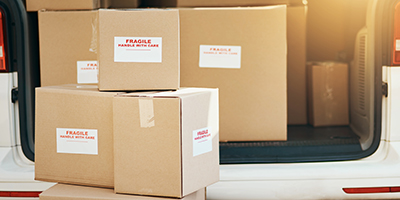與我們聯絡
與 Tek 業務代表即時對談。 上班時間:上午 6:00 - 下午 4:30 (太平洋時間)
請致電
與 Tek 業務代表即時對談。 上班時間:上午 8:30 - 下午 5:30 (太平洋時間)
下載
下載手冊、產品規格表、軟體等等:
意見回饋
Package Testing for Ecommerce: Don’t Get Left Behind
Ecommerce is growing at a rapid pace. Online sales have continued to grow over the past decade and are expected to reach $710 Billion in the US in 2020. The COVID-19 pandemic has only accelerated this trend. The US has seen a massive 44% increase in ecommerce from Q2 2019 to Q2 2020.

Are you prepared?
Whether your company began selling online to survive during the pandemic, or you have a well-established ecommerce program, thorough package testing could save you money and increase customer satisfaction. There are several reasons why you should be testing your packaging before selling online:
- Reduce Lost Product – A package could be dropped an average of 17 times during the distribution process and 20% of product returns are due to shipping damage (Marketplace.org, Invesp). Poor packaging could be leaving you footing the bill for replacement product and extra shipping costs. That doesn’t even include the time you are spending filing insurance claims if you are unlucky enough to lose a whole pallet or more of product.
- Reduce Waste – Sturdy packaging protects your product during the distribution process, but how much of that packaging is necessary? Reducing the amount of unnecessary packaging could lead to big materials cost savings in the long-term and improves environmental sustainability.
- Meet Retailer Requirements – The growth in ecommerce has led online retailers and package distributors alike to develop new standards and requirements for customer packaging to both reduce waste and protect products.
- Increase Customer Satisfaction - Customers want to receive their purchases in good condition and do not want to struggle with extra or tough-to-open packaging.
Specific Retailer Shipping Requirements
Not surprisingly, the push to improve packaging was in part led by the nation’s largest online retailer, Amazon. In 2008, Amazon introduced the Frustration Free Packaging program in order to reduce waste and eliminate pesky packaging components like clamshells and wire ties. Since then, several other retailers and distributors have worked with standards organizations to develop their own testing schedules. Here are a few of those retailer or distributor-specific standards:
ISTA 6-Amazon.com
Amazon is now requiring certain types of packages to be certified using the ISTA 6-Amazon.com standard to verify that packaging meets the requirements of the Frustration Free Packaging program. Financial incentives and penalties are in place to encourage customers to comply with the testing requirements. ISTA 6-Amazon.com is split into three tiers:
- Tier 1: Meets the requirements of ISTA 6-Amazon.com-SIOC Testing but is also consisting of minimal packaging, easy to open, and completely recyclable.
- Tier 2: As defined in ISTA 6-Amazon.com-SIOC Testing, package is shipped in its own container and does not require prep from Amazon, does not require an over box, and shows minimal damage during testing.
- Tier 3: As defined in ISTA 6-Amazon.com- Over Boxing, the package utilizes a master shipping container, but does not require prep from Amazon and shows minimal damage during testing.
ISTA 6-SAMSCLUB
This testing series is required for customers who stock at Sam’s Club stores. Sam’s Club requires that its products are covered by liability insurance and can stand up to the rigors of its distribution process. There are several different test schedules base on whether the product is perishable, palletized or individually packaged.
ISTA 6-FedEx
FedEx worked with the ISTA to develop testing standards customers can use ensure their packaging will stand up to the typical distribution cycle for FedEx shipments.
- ISTA 6-FedEx-A – Testing sequence for FedEx Ground and FedEx Express packages weighing less than 150 lbs. with less than 165” of length or girth. Includes several different types of tests such as drop, vibration, compression and impact testing.
- ISTA 6-FedEx-B – Testing sequence for FedEx Express Freight weighing more than 150 lbs. and more than 165” in length or girth. Includes several types of testing such as raised edge, inclined impact, compression, and tip testing.
- FedEx Freight LTL Shipments – Utilizes ISTA 3B to test LTL shipments for FedEx Freight. Includes several types of impact testing, drop testing, tip testing and forklift testing.
UPS Package Testing
Package testing for products being shipped through UPS is encouraged but not a requirement. UPS tests packages at its internal labs using the ISTA 3 series.

Tektronix testing services labs are ISTA certified to perform a variety of tests.

Tektronix is certified by A2LA as an ISO/IEC 17025 Accredited laboratory. View Certificate...



